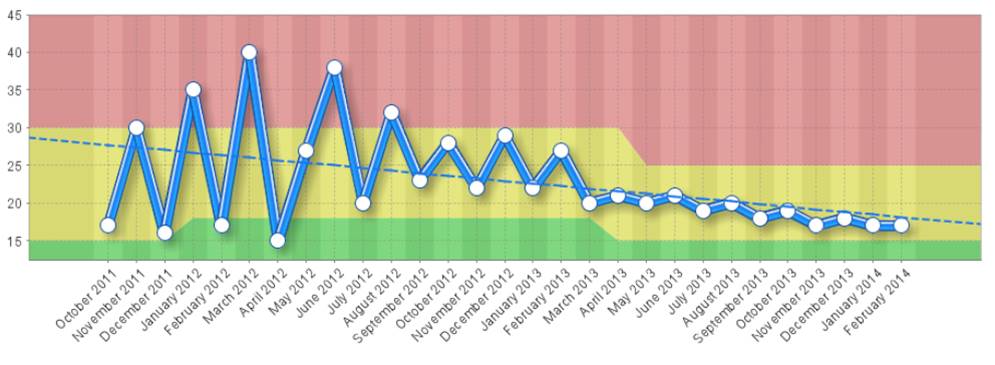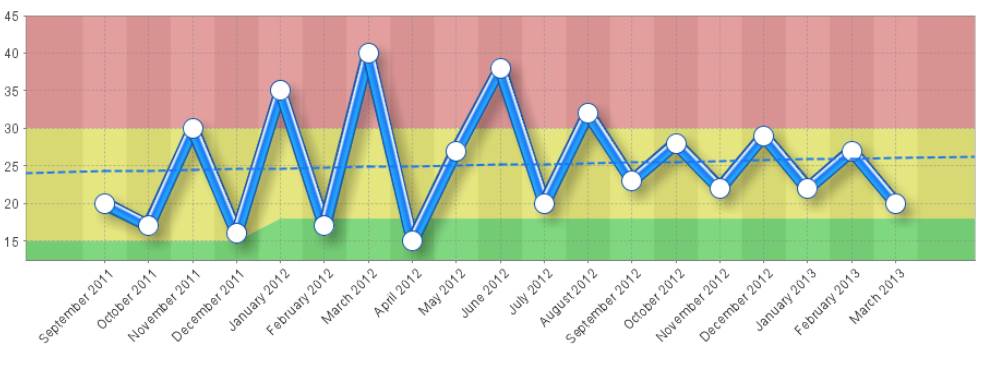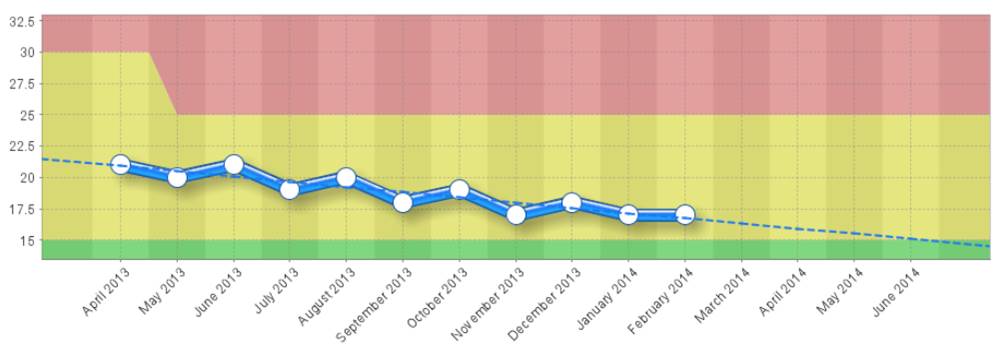Nine Steps to Success™ – Step 7 Performance Analysis
Performance Analysis is the seventh step of the Balanced Scorecard Institutes framework for strategic planning and management, the Nine Steps to Success™.
It is at this point in the process when we move from building a strategic management system to running the system itself. Whereas up to now we have asked questions like ‘what are we trying to accomplish?’ and ‘what should we be measuring?’, we are now using the information to determine how well we are performing, which of our strategies is succeeding and whether or not we are measuring the right things.
The focus is therefore on analysing performance. Taking the data we have collected, examining it, and turning it into useful information. By doing so we will be able to make better decisions and therefore drive improved strategic outcomes.
Selecting the right performance management tool is a vitally important part of this step, there are many things that need to be considered, not least of which is what your users actually need. Depending on the maturity of the organisation with regard to performance management this may be a big change or it may be an add-on (although a significant add-on) to the way they have done things in the past. To help with this process, please refer to our guide
Once a tool has been selected, there are three stages that need to be considered:
1. Collect and describe performance data
2. Analyse and draw conclusions
3. Take action
1. Collect and describe performance data
Collecting and describing performance data is much more than simply recording numbers. The data has to be presented in such a way that it provides information that is useful to a management team. All too often we are driven by snap-shot information. A sudden dramatic deviation from the norm can cause an executive reaction that drives a huge amount of work only to find that the ‘blip’ was simply caused by a known factor, for example a half-term holiday reducing commuter travel. The first thing to consider is history. By understanding a historical trend, we can plan better for the future. Historical data allows us to display the ‘frequency’ of a variable and therefore predict limits or ‘thresholds’ for the variable. The example below shows how acceptable ‘thresholds’ have been changed over time as performance has changed:
Performance Analysis Tresholds – Intrafocus
Note there is a natural variation in the data over time and this should not be misinterpreted as a change in performance. We can note however in the above example that the natural variation has changed quite dramatically over time. This leads us to the second point:
2. Analyse and draw conclusions
By examining past performance we can do the following:
Remove anomalies
Stabilise performance
Create acceptable thresholds
Base-line performance
Let us look at a scenario to examine this further: The graph below shows a key performance indicator (KPI) for a typical company selling a service that requires something more than a standard contract. The history shows that from December 2011 through to June 2012 the measure, ‘Average Time to Contract in Days’ fluctuated wildly from 40 days at worst to 15 days at best.
By applying the first step from the list above, remove anomalies, through examination of other factors, we can determine that in October 2011 staffing dropped from 3 to 1 causing an immediate impact. We can also determine that in Feb 2012 an extra temporary staff member was drafted in bi-monthly to tackle a backlog. By removing these anomalies we can see a more stabilised view of the data. However, the metrics are still often outside acceptable thresholds.
In this example, remedial action was taken to stabilise performance in June 2012 by adding a new permanent staff member. We can see from June 2012 through to Feb 2013 the performance has stabilised. This period of seven months is also long enough to baseline past performance to allow a meaningful future target to be set. One method that can be used is to look at the trend line for the stabilised period and extrapolate forward to an agreed target.
An element of caution should be applied to this method as trend lines can often reverse simply by adding an extra month of data. The key here is to use the stabilised period as your baseline. With the trend line going in the right direction, the performance thresholds (and therefore target) can be reset to achievable values. In this example, the new target was set April 2013 through a revised upper and lower threshold.
There are a few important things to note about using history to set targets:
Performance improvement is always a long-term activity – unless you know where you have come from, you will never know where to go.
True performance improvements can only be attained in a stable environment – where performance is fluctuating wildly, the underlying problem is usually obvious and can usually be fixed easily.
Targets are good but thresholds are better – Having a target is a good thing. We need to focus our efforts. We also need to know what is not acceptable and the answer is not always binary. Moving towards a goal can be as motivational as hitting the goal.
3. Take action
Actions can take many forms. They may be simple tasks put in place to rectify a problem identified by a failing performance measure. They may be enhancements to existing strategic initiatives to better focus activities or they may be new strategic initiatives that were not thought of previously. It may be that the measure provides little of no value and is no longer required.
The key here is to continually review the strategy based on the information provided by the measurements. At this stage, the data should be used as a management tool because it is needed, not because someone is asking for it. It should be that performance measurement has become part of an every-day dialogue.
Performance Analysis is the seventh step in a strategic planning journey. The Nine Steps to Success™ is a strategic planning methodology created by the Balanced Scorecard Institute. For more information on how to be trained as a Balanced Scorecard Professional (BSP) visit our training pages on the website.





